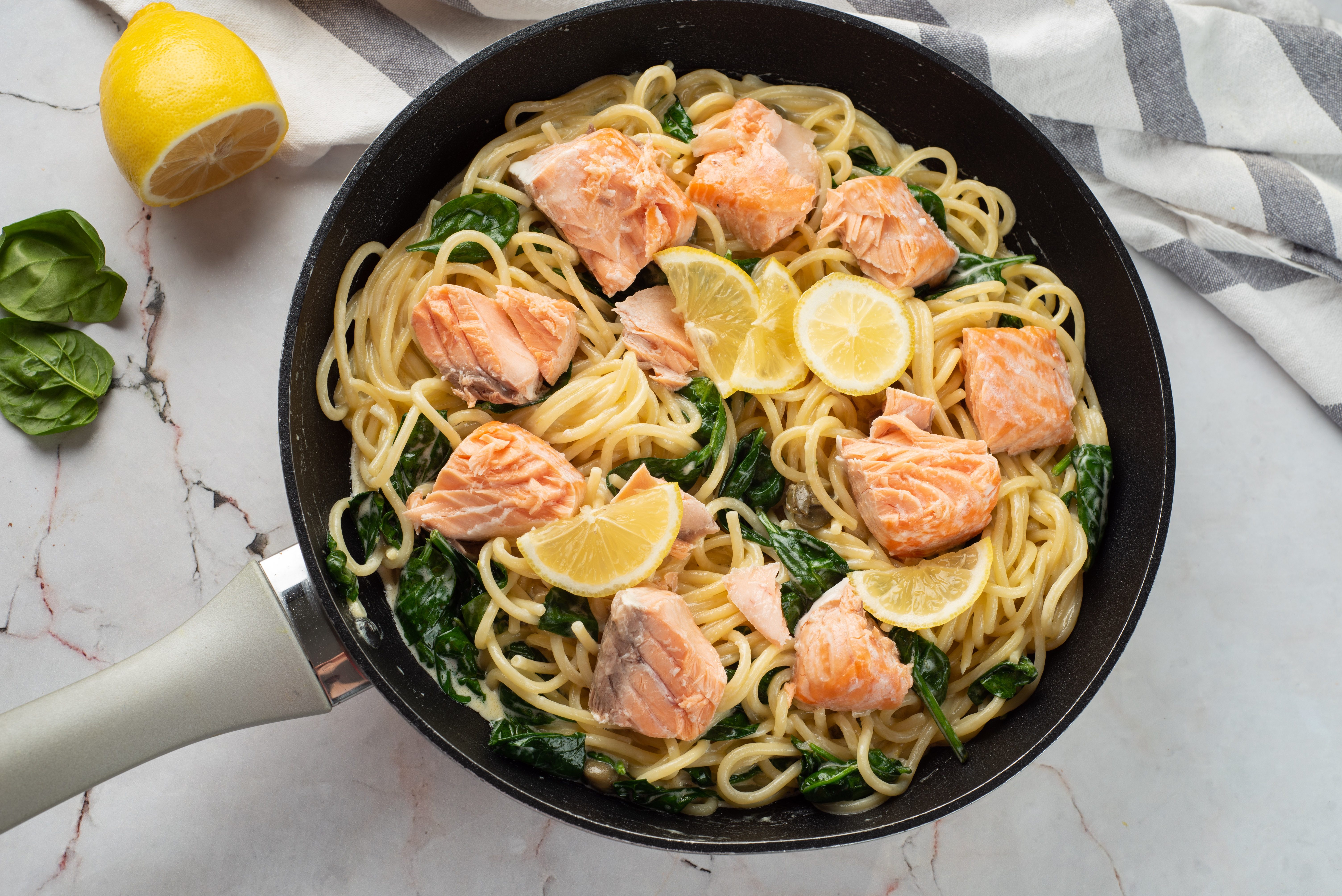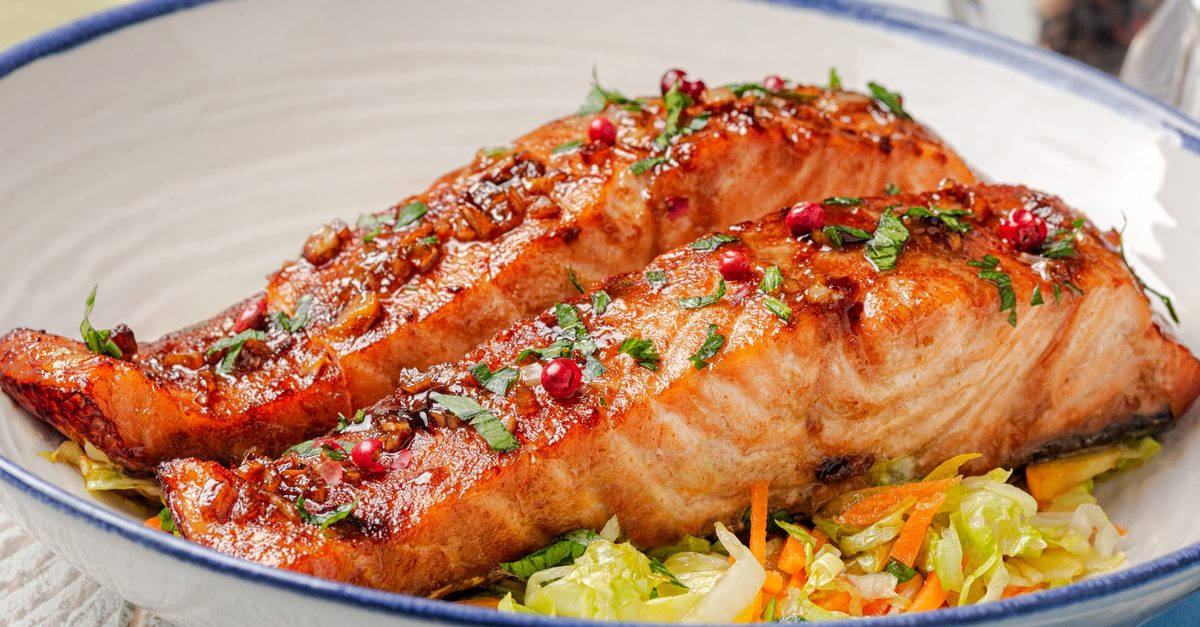Seafood Lasagna: the Easy Recipe with Salmon and Grouper to Make it Creamy

Fish lasagne is the seafood variant of this classic Italian Sunday dish. Similarly to the classic version of Bolognese, it is a rich and tasty main course, made with fresh egg lasagna sheets, fish ragu and béchamel for a full-bodied and creamy result. In our recipe we have prepared a lemon-scented béchamel sauce which, thanks to its delicately aromatic and fresh flavor, goes perfectly with the fish.
To make the seafood ragu, we chose firm and meaty fillets, such as salmon fillet and grouper fillet, in order to give body and consistency to the sauce; if you like, you can customize it by adding the fish you prefer, such as perch, monkfish, swordfish or whitefish for a freshwater variant. For a more sustained and fragrant result, the fish, once cleaned and cut into bite-sized pieces, is browned with a base of oil, garlic and parsley, then cooked directly in the tomato puree.
In case you don't feel confident enough, you can ask your trusted fishmonger to clean the fish, removing the skin at the time of purchase. For a more decisive note, you can add a mixture of capers and olives to the initial sauté. Depending on your personal tastes, you can prepare red lasagna, adding tomato puree, or make it white, without adding the tomato.
Find out how to prepare the seafood lasagna by following our step-by-step procedure and advice.
Ingredients
How to Prepare Seafood Lasagna
;Resize,width=712;)
Start by preparing the béchamel: put the butter inside of a large saucepan and let it melt gently.
Start by preparing the béchamel: put the butter inside of a large saucepan and let it melt gently.
;Resize,width=712;)
Add the starch to the melted butter in one go and mix vigorously with a whisk to avoid the forming of lumps. Leave to brown and then, continuing to mix, slowly add the hot milk.
Add the starch to the melted butter in one go and mix vigorously with a whisk to avoid the forming of lumps. Leave to brown and then, continuing to mix, slowly add the hot milk.
;Resize,width=712;)
Salt, pepper and add a generous grating of lemon zest.
Salt, pepper and add a generous grating of lemon zest.
;Resize,width=712;)
Cook the béchamel sauce, stirring constantly, over a low heat until it is thick and well combined. Turn the stove off and let it cool.
Cook the béchamel sauce, stirring constantly, over a low heat until it is thick and well combined. Turn the stove off and let it cool.
;Resize,width=712;)
Rinse the fish fillets under fresh running water, then drain and pat dry with absorbent kitchen paper.
Rinse the fish fillets under fresh running water, then drain and pat dry with absorbent kitchen paper.
;Resize,width=712;)
Feel them with your fingertips, identifying and removing any residual bones.
Feel them with your fingertips, identifying and removing any residual bones.
;Resize,width=712;)
Using a sharp, smooth-bladed knife, cut the flesh at the tail and of the fillets and let the blade slide to remove the skin of the fish.
Using a sharp, smooth-bladed knife, cut the flesh at the tail and of the fillets and let the blade slide to remove the skin of the fish.
;Resize,width=712;)
Cut the cleaned pulp into cubes.
Cut the cleaned pulp into cubes.
;Resize,width=712;)
Rinse and dry a bunch of parsley, remove the double and toughest stems, then chop finely.
Rinse and dry a bunch of parsley, remove the double and toughest stems, then chop finely.
;Resize,width=712;)
Peel and chop half of the cored garlic clove and place it in a large pan.
Peel and chop half of the cored garlic clove and place it in a large pan.
;Resize,width=712;)
Add half the parsley, a drizzle of oil and fry.
Add half the parsley, a drizzle of oil and fry.
;Resize,width=712;)
At this point, add the fish and let it flavor on a high heat.
At this point, add the fish and let it flavor on a high heat.
;Resize,width=712;)
Deglaze with white wine and let the alcohol evaporate. Then add the salt and the pepper.
Deglaze with white wine and let the alcohol evaporate. Then add the salt and the pepper.
;Resize,width=712;)
Leave to cook for about ten minutes, flaking the fish with a wooden spoon.
Leave to cook for about ten minutes, flaking the fish with a wooden spoon.
;Resize,width=712;)
Add the tomato puree, mix and leave to cook for 10-15 minutes from the moment the puree boils.
Add the tomato puree, mix and leave to cook for 10-15 minutes from the moment the puree boils.
;Resize,width=712;)
Add salt if necessary, mix the ingredients, turn off and let it cool.
Add salt if necessary, mix the ingredients, turn off and let it cool.
;Resize,width=712;)
Place a layer of béchamel sauce inside a baking dish for 4-6 people.
Place a layer of béchamel sauce inside a baking dish for 4-6 people.
;Resize,width=712;)
Using scissors, cut out the layer of fresh egg lasagna sheets, adapting them to the shape of your baking dish.
Using scissors, cut out the layer of fresh egg lasagna sheets, adapting them to the shape of your baking dish.
;Resize,width=712;)
Place a first layer of pasta over the béchamel.
Place a first layer of pasta over the béchamel.
;Resize,width=712;)
Cover with a layer of fish sauce. Then, continue with one of the béchamel sauce and start again with the pastry until the baking dish is filled.
Cover with a layer of fish sauce. Then, continue with one of the béchamel sauce and start again with the pastry until the baking dish is filled.
;Resize,width=712;)
Finally, carefully cover the surface of the lasagna with a layer of béchamel sauce.
Finally, carefully cover the surface of the lasagna with a layer of béchamel sauce.
;Resize,width=712;)
Cook the lasagna in a preheated static oven at 200°C for about 25 minutes.
Cook the lasagna in a preheated static oven at 200°C for about 25 minutes.
;Resize,width=712;)
Remove from the oven when a golden crust has formed on the surface. Then, let it rest for about 5-10 minutes.
Remove from the oven when a golden crust has formed on the surface. Then, let it rest for about 5-10 minutes.
;Resize,width=712;)
Complete the lasagna with a sprinkling of fresh parsley and grated lemon zest. Bring to the table and serve.
Complete the lasagna with a sprinkling of fresh parsley and grated lemon zest. Bring to the table and serve.
How to Store your Seafood Lasagna
The seafood lasagna can be stored in the refrigerator, in a special airtight container, for up to a day. You can also freeze it.
;Resize,width=767;)
;Resize,width=712;)
;Resize,width=712;)
;Resize,width=712;)
